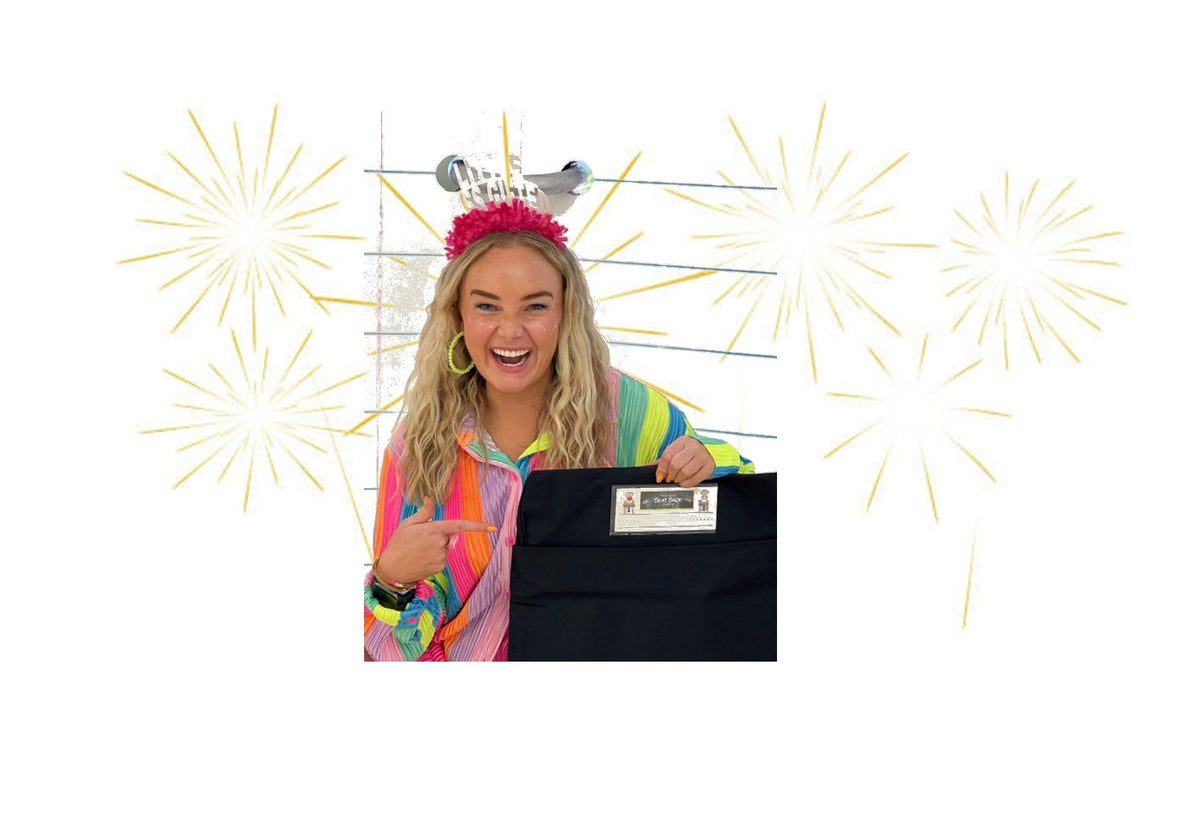
Happy New Year!
|
|
Time to read 6 min
|
|
Time to read 6 min
Follow along here with Little Miss Gifted, Stephanie Higgs
for tons of free daily tips and ideas for your classroom organization!
Whether you're a veteran teacher or newer to the field of education,
here are 5 quick tips to set the tone for your best year EVER!
Table of Content
I keep a giant stack of my favorite back-to-school read aloud books handy so any time an activity takes less time than I originally planned, I have a fun read aloud book ready to go!
Being prepared for classroom downtown time is a part of classroom organization.
Kids LOVE these, and it’s a nice brain break as we settle back into our long school days each fall. These are great for social-emotional support and mini lessons, too!
Here’s a list of my favorites!
Classroom Organization Must Have Product Back-to-School
The Responsive Classroom model of Morning Meetings is my favorite! It has four components: A Greeting, Share, Activity and Morning Message. It the perfect classroom organization model to begin the school day.
"We are like a box of crayons, Each one of us unique. But when we get together...The picture is complete!"

I introduce each portion of our day with a "Looks Like/Sounds Like/Feels Like" anchor chart. We sit together as a class and brainstorm what the different parts of our day should look, sound, and feel like while I record. These are called anchor charts because they are supposed to anchor our learning!
Put these in places where you can frequently refer back to them as students learn how your classroom organization rhythms and routines operate.
The best hack here is to ask a student to come up and model what it does NOT look like, discuss as a class what it should have looked like, and then end with one more student modeling what it DOES look like before sending students off to practice.
THINK: Model what it does, does not, does look like before inviting all students to practice.
My favorite game to model pre-vocational and organizational skills in the classroom is to play Mix & Fix with kiddos.
In this game, you model what a particular area of your classroom should look like when it is well organized, such as Seat Sack chair pockets, cubbies, desks, folders, etc. Then, you give a few seconds to mis up all their supplies. Then, you time them to see how quickly they can "fix" their supply holder back into the organized manner that you previously taught them. This demonstrates classroom organization.
Play this as many times as needed for each area of the classroom where students are responsible for managing supplies.
Be relentless! Practice this over and over until it is just right! This is an investment that will pay off tenfold throughout the year if you and your students take the time to master these organizational skills for the classroom now.

Neurodivergence, at its simplest form, just means that the brain is wired differently. This includes autism, OCD, ADHD, etc. We want to think about ways in which we can cultivate a safe, environment for ALL of our learners and their varying needs as well as classroom organization! Here’s a podcast I LOVE that helps me continue learning more about neurodiversity.
Here’s a website with TONS of ways we can make tiny tweaks to our lessons and environment to better support our neurodivergent learners. (Be sure to check out Bumper, the Total Body Learner!)
1...Sunshine Phone Calls

Sunshine Phone Calls became one of the most memorable components of my fourth-grade classroom. All week long, I was on the lookout for students who were demonstrating exemplary qualities, and on Fridays, our class would surprise them with a Sunshine Phone Call to their caregivers on speakerphone for all to hear.
During the first week of school, my class wrote a script that we would use for these special positive phone calls home. It went something like this:
Class: “This is a Sunshine Phone Call from Ms. Higgs’ class!
Class: “[Student] was a WONDERFUL WORKER!”
Teacher: Spends one to two minutes highlighting why the student was selected for this honor and bragging about their accomplishments in class.
Class: “We hope this Sunshine Phone Call brightened your day! Have a wonderful weekend!”

Students do not know ahead of time who we are calling. The class begins the sunshine phone call with the script, and then the teacher fills in the name of the student. My principal filmed one of these, and the look on the student’s face when I filled in the blank with her name was priceless. It brought tears to our eyes! She was in complete shock, and she radiated joy and pride.
This took less than three minutes each week and made a lasting impact. Classroom organization will help to provide the extra few minutes needed to make these calls that will make lifetime impressions. Years later, these are still the attribute of my fourth-grade classroom experience that I hear about most often from both parents and students. Students never forget the power of those positive phone calls, and neither do their families.
Be prepared with read aloud books as an extra activity for lessons that may not take as much time as originally planned.
Use morning meetings as a way to develop community and a sense of family among your learners.
Use relentless routines to help with classroom rhythms, transitioning and classroom organization.
Create a Neurodiversity-Affirming Classroom.
Make memorable moments with positive phone calls home.
Conclusion
Implementing these strategies and others that I share in my Instagram community will help to get your school year off to a productive, well-managed, organized classroom that will lead to fewer behavioral problems, stronger engagement and better academic performance.
Wishing YOU a Happy New Year!!!!
Seat Sack Classroom Organizers are perfect for assisting with classroom management as soon come back-to-school!


